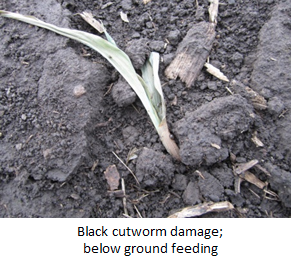

These night-flying moths are frequently attracted to lights at night. Serious losses are often associated with wet springs that have caused a delay in planting.Ĭutworms are the larvae of moths. Corn can be seriously damaged by cutworms from planting through mid-June while the plants are less than 18 inches tall. While they are potentially very destructive, cutworms are unpredictable, and the chances of significant damage in any given year are relatively low. Larger stages of cutworms cut entirely through the plant or tunnel into the plants below or above the soil line, whereas small-stage cutworms climb plants and chew small holes in the leaves. They often go unnoticed until after a significant number of plants have been damaged.

University of Kentucky College of AgricultureĬutworms are sporadic early-season pests that can reduce plant populations in a field. Reddish brown fore wing with dark brown margin.ENT-59: Cutworm Management in Corn | Download PDF by Ric Bessin, Extension Entomologist Light brown with 4-7 yellowish markings on mid-dorsal line Reddish brown fore wing with concave sunken pale area. Male has bipectinate antenna and female has filiform antennaīrownish larva with series of black markings on lateral area Triangular spots at spiracular regionįore wing is grey with peg and spot like marking. Male has bipectinate antenna and female has filiform antennaīlack coloured with brown head.

Head is pale-brownįore wing is pale brown with dark purplish brown along costal end. Two larvae / mt row is considered as ETL.īlack with pale mid-dorsal stripes. Egg, caterpillar and pupal stages last for 2 to 13, 10 to 30 and 10 to 30 days, respectively. Full-grown caterpillars enter soil and pupate in earthen cocoons. Damage is more pronounced in low-lying waterlogged areas. At night they come out, cut seedlings near ground level and eat tender parts. Tiny caterpillars feed gregariously on foliage for a few days and then enter into soil.Ĭaterpillars are nocturnal in habit and hide during day in cracks and crevices in soil or under debris around plants. Eggs are globular in shape, ribbed and whitish in colour. A female lays 300 to 450 eggs in 10 to 15 clusters. Freshly ploughed fields are preferred for oviposition. Moths appear after dusk, mate and lay eggs on ventral surface of leaves or moist soil.


 0 kommentar(er)
0 kommentar(er)
